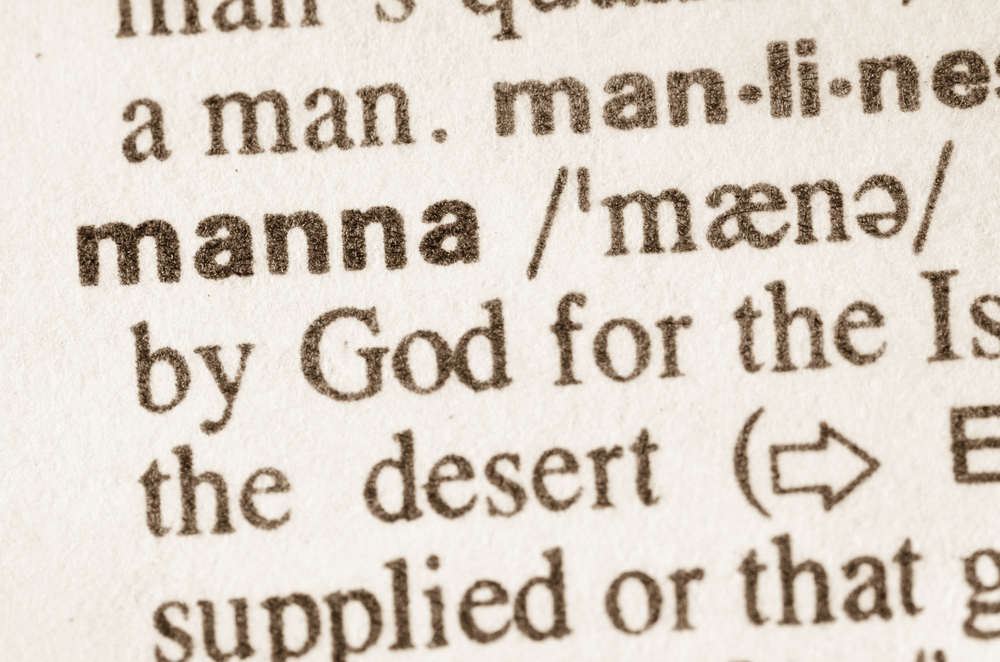
Recent statistics reveal that one out of every seven people in the world goes hungry at any given time. Getting enough to eat is a daily struggle, and food from heaven sounds like an incredible blessing. Many of us may recall the story of manna’s origins. It is a “food from heaven” miracle depicted in the three major Abrahamic faiths. But what was this mysterious substance, and is there any evidence that it existed? The answers to these questions may surprise you.
Miracle Meals, Made Fresh Every Day
Manna is mentioned in the Hebrew Torah, the Christian Bible, and the Quran. In the former two religious texts, manna is characterized as a white, delicate, flake-like substance that tastes like wafers with honey and appeared during the night with the dew. While the Quran doesn’t explicitly describe manna’s appearance or flavor, three of its passages refer to Allah sending manna and quails as sustenance.
According to excerpts from Exodus and Numbers, the ancient Israelites were instructed by God to gather only what they needed to eat each day. Any extra hoarded manna would inexplicably spoil by the next morning. The only exception was the day before the Sabbath, on which they would collect twice the normal ration to eat since they were forbidden from working on the Sabbath itself.
Speculation About Manna’s Origins
As the Atlas Obscura explains, scholars throughout history have tried to determine manna’s origins. Such studies looked at the scriptural narratives and tried to find real-world substances in nature that match manna’s characteristics. It must not only taste like the mystical food, but it should also be capable of sustaining human life when consumed over long periods of time. After all, the story purports that the Israelites ate manna for forty years until they reached the outer border of Canaan.
Several possible candidates have been suggested. One algae species grows swiftly in massive numbers on the Sinai’s desert floor when there’s plenty of nourishing dew. Several indigenous lichen species shrivel up and travel on the wind when dry, landing on nearby plants or the ground. Others point to sticky pearl-like secretions produced by the tamarisk manna scale, an insect that feeds the tree’s branches. The last theory is currently the most popular, as these sweet honey-flavored globules are considered a delicacy in the Middle East. The trees themselves produce a white substance that’s also referred to as manna.
Etymology Offers More Fascinating Clues
As words are decoded from one language and rendered in another, nuances of meaning may be lost in translation. This is especially evident when trying to understand the content of ancient religious texts. Since the word “manna” doesn’t have an obvious equivalent in English, linguists have tried searching for its closest possible translation.
The Online Etymology Dictionary contains the most commonly accepted explanation, which is that it came from the Hebrew word “mān” meaning “substance exuded by the tamarisk tree.” Chabad reveals another suggested possibility, namely, that it comes from the ancient Kemetic word “mon,” which could be translated as “what.” Others have theorized that it comes from the Arabic phrase “man hu,” translated as “this is plant lice.”
Ingenuity and the Human Drive To Survive
Sometimes we may take our food for granted, but the domestication of plants and animals paved the way for the development of most major civilizations. Without these innovations, we still might be a race of hunter-gatherers. This is one testament to the power of dependable food access, but we should also consider how human ingenuity emerges in tough times. Depending on how you understand manna’s origins, it may be proof of how ordinary objects in nature become essential keys to survival and success.

